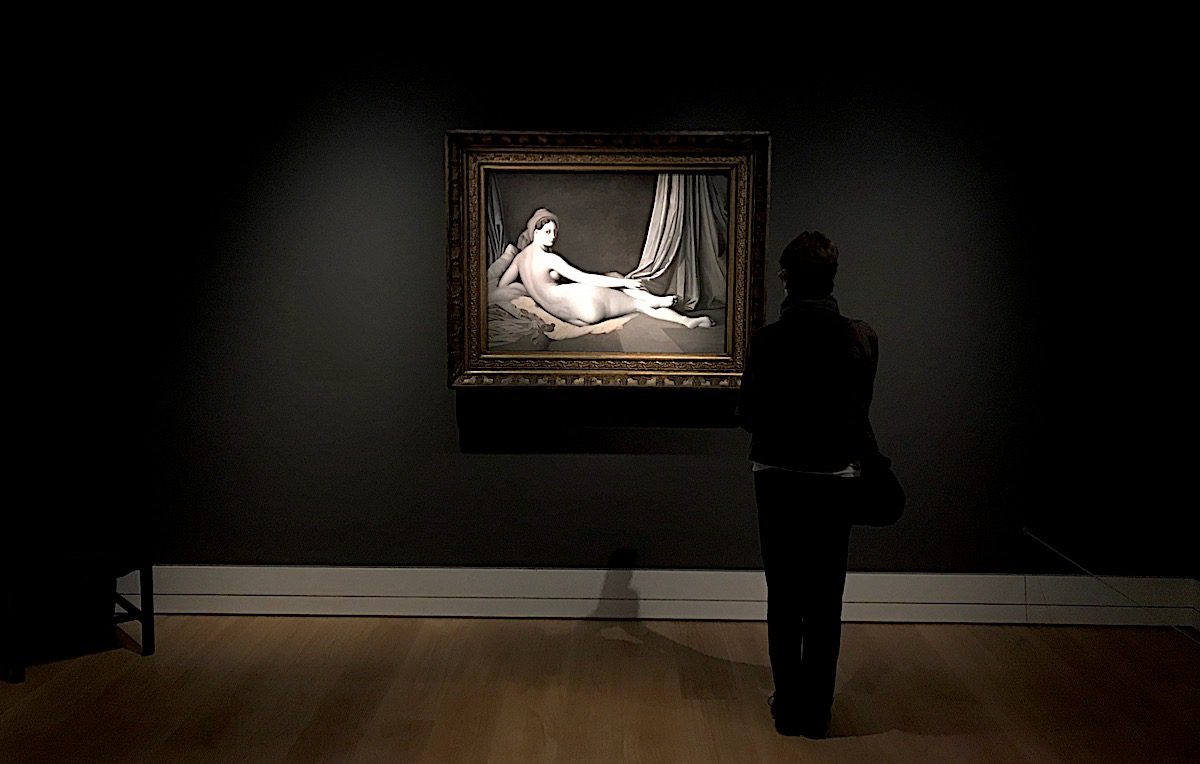Monochrome: Painting in Black And White is an extraordinary new show at the National Gallery in London. It takes the viewer on a journey through a world void of colour that focuses on shadow and light. This is the first survey of painting from the Medieval period to the present, with more than fifty paintings and objects created over the past 700 years.
“Artists choose to use black and white for aesthetic, emotional and sometimes even for moral reasons.” – Dr Gabriele Finaldi
The show is a curatorial masterstroke for Lelia Packer and Jennifer Sliwka. The duo has a thoughtful yet radical approach to the age-old conundrum of what happens when artists cast aside the colour spectrum and focus on the visual power of black, white.
The exhibition contains prime examples of paintings, drawings and painted objects by Old Masters such as Jan van Eyck, Rembrandt; a rarely displayed Albrecht Dürer portrait from the British Museum and of course Jean-Auguste-Dominique Ingres’ influential nude in black and white from the collection of NY’s Metropolitan Museum.

Works by seminal contemporary artists, including Frank Stella, Cy Twombly, Jasper Johns, Gerhard Richter, Chuck Close and Bridget Riley make a strong case for this thought-provoking show.
The exhibition has borrowed works from around the world and includes several works from the National Gallery’s own collection; Monochrome reveals a fresh approach to the use of colour as a choice rather than a necessity.
Packer and Sliwka, explain, “Painters reduce their colour palette for many reasons, but mainly as a way of focusing the viewer’s attention on a particular subject, concept or technique. It can be very freeing – without the complexities of working in colour, you can experiment with form, texture, mark making, and symbolic meaning.”

Contemporary and Modern artists have always been drawn to black and white. The absence of colour can be all the more shocking or thought-provoking. In 1916, Kiev-born artist Kazimir Malevich unleashed his revolutionary work, Black Square (1929, the State Tretyakov Gallery, Moscow) – an eponymous black square floating within a white painted frame –and declared it to be the beginning of a new kind of non-representational art. Works by Josef Albers, Ellsworth Kelly, Frank Stella and Cy Twombly all exemplify the use of minimal colour for maximum impact.

Artists intrigued by colour theory and the psychological effects of colour (or its absence) manipulate light, space, and hue to trigger a particular response from the viewer. In this way, Olafur Eliasson brings the exhibition to a close with his large-scale, immersive light installation, Room for one colour (1997). Eliasson quietly obliterates colour vision in a room illuminated with yellow mono-frequency lamps, suppressing all other light frequencies and transporting visitors to a monochrome world.
This is an intelligent exhibition not to be missed! ****Star
Image: Jean-Auguste-Dominique Ingres and workshop Odalisque in Grisaille, about 1824-34 Oil on canvas, 83.2 × 109.2 cm © The Metropolitan Museum of Art / Art Resource / Scala, Florence
Monochrome: Painting in Black and White National Gallery Open to public: 30 October 2017 Daily 10am–6pm (last admission 5 pm) Fridays 10am–9pm (last admission 8.15pm)
Photos: P C Robinson © Artlyst 2017
Visit Exhibition Here

